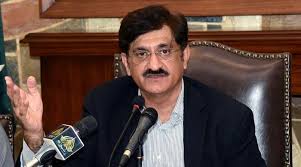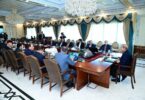KARACHI (APP): The Sindh Chief Minister Syed Murad Ali Shah presiding over an important meeting regarding bringing back 4.1 million out-of-school children to schools directed the School Education Department to implement a policy of gradually upgrading all primary schools to post-primary schools and develop a connection with cluster schools to retain children and prevent the dropout ratio from increasing.
The meeting was held at the CM House and was attended by Minister of Education Syed Sardar Shah, PSCM Agha Wasif, Secretary of School Education Zahid Abbasi, and other concerned officers. The Chief Minister mentioned that the Pakistan Institute of Education (PIE) published a report in January 2024, which stated that there are 26.2 million children out of school in Pakistan. Sindh’s share in this number came out to be 7.63 million children, which is a very alarming situation.
In response to this, Education Minister Sardar Shah quoted the latest figures from the Ministry of Education (Federal Government), he said there are 4.1 million children out of school in Sindh.
The education minister further informed the Chief Minister that there are a total of 14,208,257 children in Sindh, out of which 10,204,647 are receiving education in government, private, Madrasah, Sindh Education Foundation, and other institutions, while 4.1 million are out-of-school. Breaking down the numbers, he stated that 4.5 million children attended government schools, 3.9 million attended private schools, and 840,000 children attended Sindh Education Foundation.
Additionally, 500,000 children attended Madarsahs, and 500,000 attended federal/Pak Army/Navy schools.
The Chief Minister has stated that in 2019, UNICEF Sindh conducted a sample study to determine the reasons behind children not attending school in the province. The results of the study revealed that children between the ages of 5 and 16 were out of school for several reasons.
These included 20 per cent of households living in poverty, 16 per cent of families not giving importance to education, 15 per cent of girls’ schools not being available, 14 per cent of schools being too far away, 13 per cent of children engaging in livelihoods, 13 per cent of nearby educational institutes lacking appropriate infrastructure, and eight per cent of cultural barriers towards girls’ education.
During a meeting, Education Minister Sardar Shah informed the Chief Minister that there were 36,234 primary schools and 4,730 post-primary schools, which resulted in a 54 per cent drop-out rate for children at the post-primary level. The Chief Minister acknowledged the disparity between primary and post-primary schools and suggested that it needed to be addressed to prevent dropouts.
To tackle this issue, the Chief Minister approved a policy to gradually upgrade all primary schools to post-primary schools in the Annual Development Plan (ADPs). Additionally, the government will work on developing linkages with cluster schools to retain children and prevent dropouts.
The Education Minister Sardar Shah highlighted the importance of providing non-formal education opportunities to children between the ages of 9 and 16. He also mentioned that Accelerated Learning Programs could be used to bring non-formal education into the mainstream. However, he noted that the current resources were insufficient to meet the demand for non-formal education. In response, the CM said that his government was in the process of creating an Authority of non-formal education to better address the educational needs of these children.
The Chief Minister reported that 19,806 schools were damaged, of which 7,503 were fully damaged and 12,303 were partially damaged. 5,295 units have been included in the construction program, for which donor agencies were also assisting.
The Chief Minister stated that he would request the prime minister for financial support for three priority areas. These include upgrading schools from Primary to Elementary, rehabilitating remaining flood-affected schools, and establishing more Non-formal literacy centers in all districts, he said.







